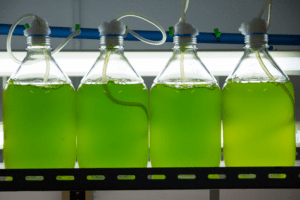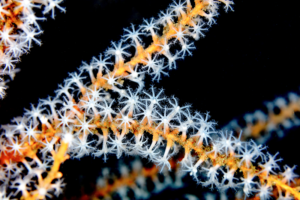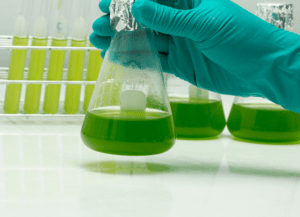Phytoplankton is a crucial part of the ocean’s food web. So, it only makes sense that phyto should also be a crucial part of our feeding routines. Yet, many reef keepers are still unsure if they should be using a live phytoplankton product like OceanMagik. In this article, we will explore a few of the most asked questions we get about using live phytoplankton.
There are a few different phytoplankton products on the market for the reef keeping hobby. Yet, OceanMagik is especially prized in view of the four species of phytoplankton. Greater biodiversity improves stability and balance in nature. That is why we try to mimic that biodiversity in captivity. One of the benefits of using OceanMagik is that every one of the different phytoplankton species have a different role in the reef tank system.

How long does live phytoplankton last?
Phytoplankton is like a plant in the sense that it requires sunlight and nutrients for growth. They use photosynthesis to convert carbon dioxide into simple sugars to create their own energy. In nature, phytoplankton populations can explode when the conditions are right. Conditions such as salinity, water temperature, wind, and runoff can all contribute to phytoplankton blooms. A large phytoplankton bloom can even be seen on satellite images. Given the right conditions, phytoplankton blooms can last for several weeks.
However, aquacultured phyto does not last quite that long. OceanMagik has a shelf life of about four weeks. There are just two requirements for maximizing the shelf life. First, OceanMagik must be refrigerated! Refrigeration should be in a range of 32°-39°F. Storing it at temperatures any warmer than that will reduce the nutritional content of phytoplankton. When the phyto goes into refrigeration, the cells are basically put into hibernation.
The second storage requirement is that phyto needs to get agitated every day. Phytoplankton settles out of suspension and will begin to degrade in a matter of days if it is left without being agitated. When the phyto begins to settle it will clump together at the bottom of the bottle. It resembles dark, green crumbs. Vigorously shaking the bottle daily will help keep the phyto in suspension. Keeping the phyto from accumulating for an extended period is critical for prolonging the shelf life.
Do corals eat live phytoplankton?
The simple answer to this question is, that depends! A coral that is non-photosynthetic (NPS) will absolutely feast on phytoplankton. Certainly, many “photosynthetic” coral species in our reef tanks are not going to need additional feedings. They rely on their zooxanthellae for nutrition. While these corals can live without being target fed, they can’t survive without their zooxanthellae. Yet there has been promising evidence that phytoplankton does support the health and growth of zooxanthellae.

Corals do not actually eat a lot of phyto compared to bacteria. This is on the grounds that phytoplankton is scarce on the reef. Just small amounts of phyto float in from ocean. Corals are also very specific as to the size of the phyto it will consume. That is one of the reasons why OceanMagik is formulated with a blend of four species of phyto.
So, we have established that many corals do not prefer to eat phytoplankton. At least not directly! Many corals do eat copepods. And pods eat phytoplankton! Phyto is one of the main sources of nutrition during the copepod’s larval stage.
Phytoplankton consumes compounds like nitrates and phosphates and converts them to fatty acids. The pods and other filter feeders will then ingest the phyto. When the copepod larva consumes phyto they absorb those fatty acids. Which get passed along to the coral that capture the pods. Corals that get fed better, grow better!
How do I keep phytoplankton alive?
As we have discussed above, there are just two requirements to keep phytoplankton alive. First, it needs to be refrigerated. And secondly, it needs to be agitated. Both conditions are quite easily met! We suggest that the phyto is added to the reef tank system daily. Before adding the phyto, be sure to shake the bottle vigorously. This should move any settled phyto back into suspension.
Live phyto that is left to warm up to room temperature will begin to degrade very quickly. A bottle of OceanMagik can spoil in a matter of hours if it is not refrigerated. When phytoplankton is harvested, it gets placed in a cooler. This prevents the phyto from maturing. The metabolism slows like a bear in hibernation. If the phyto is kept cold, it will not spoil.

How much phytoplankton do I need to add to my aquarium?
Typically, we suggest using a daily dosage of 5mL for every 20 gallons of aquarium water. After a few weeks, that amount can be adjusted to increase or decrease the dosage. Unlike prepared food products, it is very difficult to overdose a reef tank with phytoplankton.
However, there are a few things to keep an eye on when beginning a phyto regimen. Phyto loves to eat up nitrate and phosphate. In tanks that have issues with nutrient export and high levels of nitrate and phosphate, this can be a major benefit. On the other hand, in SPS or zoanthid dominant reef tank systems, undetectable nitrates can make for unhappy coral. That is why we suggest monitoring these levels closely for the first few weeks of a phyto regimen.
Conclusion
We hope that this article has helped to explain a few of the ways phyto works as a live food. OceanMagik was developed specifically to meet the needs of the reef tank system. The diverse blend of four phyto species provides nutrition to the reef tank and helps to eliminate excess waste compounds.

Phytoplankton is such a crucial part of the ocean’s food web that it only makes sense to incorporate it into our feeding regimens. If anyone is even slightly skeptical about the results, we implore them to try OceanMagik for themselves. This blend of four phyto species was selected because they work the best in captivity. Dosing phytoplankton isn’t just to feed those coral or inverts that feed on it. By starting a phyto regimen, we are getting as close to mimicking nature as we can. And that is exactly what we are striving for!





Patrick Hilliard says
If the phytoplankton is put into a 10 gallon tank and kept under a light, would I be able to exchange a quart jar of dirty tank water for a quart of phytoplankton for the tank, and keep the culture alive indefinitely?